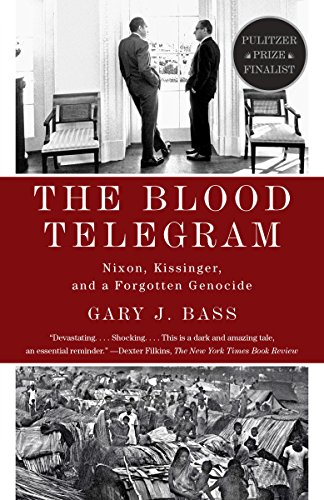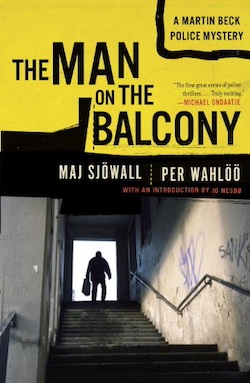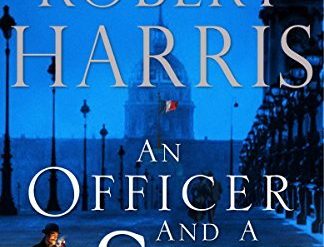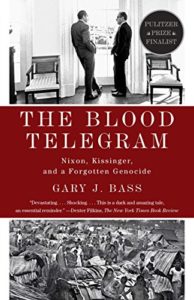
In recent years I’ve read and reviewed 15 good recent books books about aspects of American foreign policy. I’m listing them here, in alphabetical order by the authors’ last names. Each title is linked to my longer review.
This post was updated on October 11, 2023.
The Blood Telegram: Nixon, Kissinger, and a Forgotten Genocide, by Gary J. Bass
Though little known outside the realm of specialists, Richard Nixon and Henry Kissinger collaborated with the Pakistani government in murdering hundreds of thousands of people in 1971 in what today is Bangladesh. Their complicity in that genocidal event has finally come to light in Gary J. Bass’ outstanding work of modern history, The Blood Telegram. Bass, a professor of politics and international affairs at Princeton University, makes effective use of newly opened secret archives and other primary sources as well as interviews with many of the surviving players in the drama.
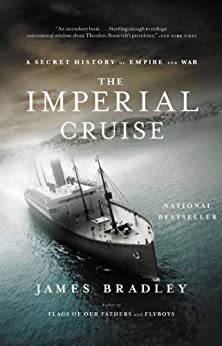
The Imperial Cruise: A Secret History of Empire and War, by James Bradley
Racist attitudes were so prevalent and unchallenged in the U.S. at the turn of the 20th Century that the president of the American Association for the Advancement of Science—the founder of anthropology in the country—could observe, “The Aryan family represents the central stream of progress, because it produced the highest type of mankind, and because it has proved its intrinsic superiority by gradually assuming control of the earth.” In hindsight, then, it should be no surprise that such celebrated figures as President Theodore Roosevelt and his successor, William Howard Taft, would speak openly about America’s “destiny” to dominate Asia and the Pacific, imposing the benefits of Aryan civilization on the “Pacific niggers” (their term for Filipinos) and “Chinks.” This is the persistent theme of best-selling author James Bradley’s portrayal of Roosevelt and Taft in The Imperial Cruise.
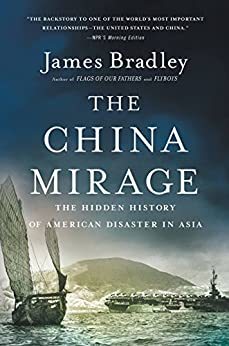
The China Mirage: The Hidden History of American Disaster in Asia, by James Bradley
James Bradley argues in The China Mirage that cultural and historical ignorance, political miscalculation, bitter bureaucratic infighting, and media manipulation led not just to U.S. involvement in World War II but, by extension, in the wars in Korea and Vietnam as well. Bradley regards all three wars as having been unnecessary. While his argument may be overextended, the book is filled with fascinating accounts of the Chinese Exclusion Act, the China Lobby, the rise of the Soong family to power in China, the origins of the oil embargo that triggered Japan’s attack on Pearl Harbor, and the Chinese Revolution.
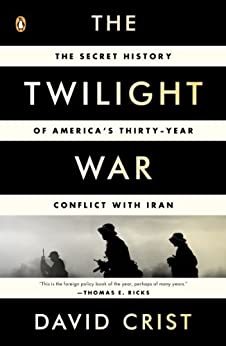
The Twilight War: The Secret History of America’s Thirty-Year Conflict with Iran, by David Crist
When it comes to Iran, the purveyors of news have done an especially poor job of keeping us informed. As David Crist makes clear in this illuminating report on the three decades of conflict, tension, miscalculation, and profound misunderstanding that have characterized our two countries’ relationship, we have indeed engaged in what can only be described as war for several extended periods. And when I say war, I mean soldiers, sailors, and air force pilots shooting at one another, laying mines, launching missiles at ships and ground facilities, and generally forcing one or both of the two governments to decide between escalation and retreat. The book is full of surprises.
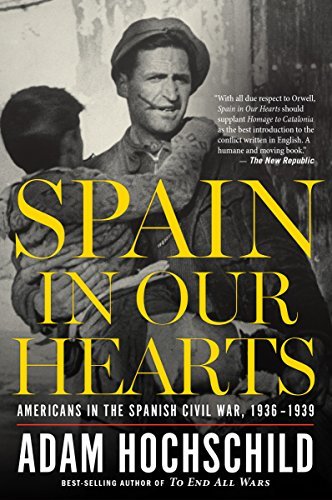
Spain in Our Hearts: Americans in the Spanish Civil War, 1936-1939, by Adam Hochschild
Though the U.S., Great Britain, and France all withheld support for the Spanish Republic, three other leading powers of the day plunged into the conflict with enthusiasm: Nazi Germany, Fascist Italy, and the Soviet Union under Josef Stalin. Adolf Hitler and Benito Mussolini regarded the war in Spain as a dress rehearsal for the larger conflict to follow. Their lavish support for Generalissimo Franco in the form of airplanes, tanks, rifles, artillery, and some 100,000 soldiers and airmen was decisive (80,000 from Italy, 19,000 from Germany, in addition to 20,000 from Portugal).
Only the USSR faced off against the Nazis and Fascists, supplying weapons and ammunition, and its support was a mixed blessing: Stalin sold Spain ancient weapons at inflated prices. He also dispatched hardline political commissars to weed out anyone who didn’t rigidly follow the Party line, and their ruthless behavior was surely a factor in the defeat of the Republic. Some 2,500 American volunteers and a passel of American reporters (including many famous names) waded into the midst of this maelstrom. Adam Hochschild does a brilliant job bringing the era and the people of the time back to life.

How to Hide an Empire: A History of the Greater United States, by Daniel Immerwahr
Is the United States an imperial power? No doubt, the overwhelming majority of Americans would answer the question with an emphatic no. But historian Daniel Immerwahr has a different take on the matter. In How to Hide an Empire: A History of the Greater United States, he argues with impeccable logic and entertaining detail that our country has been an imperial power ever since its origins in the colonial era. And, even though the ways and means of controlling other peoples have changed over the past century, the United States continues to exercise imperial power despite possessing only a smattering of territories that are colonies in the traditional sense. Today’s American empire is both far grander and less tangible than the colonial empires of the past.
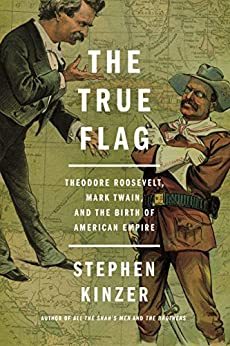
The True Flag: Theodore Roosevelt, Mark Twain, and the Birth of the American Empire, by Stephen Kinzer
Award-winning journalist Stephen Kinzer draws our attention to the principal figures in the two factions that lined up in opposition to each other before the Spanish-American War. What might be termed the imperialist faction was led by Senator Henry Cabot Lodge, then-New York Governor Theodore Roosevelt, and publisher William Randolph Hearst. These three men were largely responsible for pushing the United States into war with Spain. Former U.S. Senator and Union Army general Carl Schurz, William Jennings Bryan, former President Grover Cleveland, and later Andrew Carnegie led the opposition.
Mark Twain came to the debate belatedly, becoming the most recognizable voice of the anti-imperialist movement once Roosevelt was in the White House. Superficial histories of the years just before and after the turn of the 20th Century give the impression that America’s drive to war with Spain and the seizure of its overseas colonies was irresistible and inevitable. Kinzer makes abundantly clear that this was not the case.

In the Garden of Beasts: Love, Terror, and an American Family in Hitler’s Berlin, by Erik Larson
During the years 1933-41, a passion for isolationism and growing anti-Semitism gripped the American psyche, keeping President Roosevelt from speaking out against the growth of Nazism and the ever-tightening vise of oppression and violence directed at Germany’s tiny Jewish minority (about one percent of the population). In the Garden of Beasts, a finely-crafted and exhaustively researched little book, casts a considerable amount of light on the reasons underlying this shameful episode in American history. It’s the story of Professor William Dodd and his family, beginning in the year 1933 when Roosevelt appointed him Ambassador to Germany. In an admirably restrained manner, Erik Larson portrays their initial sympathy and support for the Nazi regime, turning gradually to revulsion and leading eventually to Dodd’s becoming one of the most prominent anti-Nazi lecturers in the United States.

A Country of Vast Designs: James K. Polk, the Mexican War, and the Conquest of the American Continent, by Robert W. Merry
It seems exceedingly unlikely that President James K. Polk would come to many minds as an example of the most important men who have served in the office. Yet a very strong case could be made that Polk’s single four-year term (1845-49) was, indeed, among the most consequential times in U.S. history—and that Polk himself was the prime mover. Robert W. Merry powerfully advances that argument in A Country of Vast Designs: James K. Polk, the Mexican War, and the Conquest of the American Continent.
It was Polk who transformed the United States into a continental power. Earlier presidents—Thomas Jefferson (Louisiana Purchase), James Monroe (acquisition of Florida), Andrew Johnson (purchase of Alaska), and William McKinley (Gadsden Purchase)—indeed added considerable swaths of territory to the nation. But James K. Polk added all the rest, including nearly all the Southwest and all the Northwest of today’s United States. He led the country into a brutal, lopsided war with Mexico and negotiated with England over the northwest boundary of the U.S.
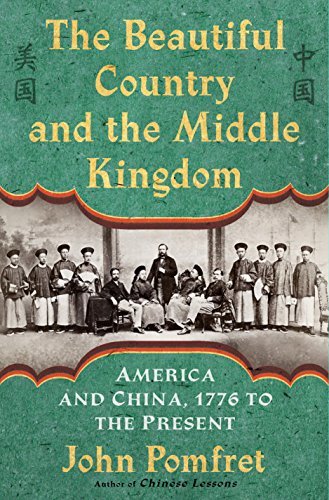
The Beautiful Country and the Middle Kingdom: America and China, 1776 to the Present, by John Pomfret
Some Americans seem to have the impression that the U.S. relationship with China began in 1972 when Richard Nixon flew to Beijing. In The Beautiful Country and the Middle Kingdom, journalist and long-time Beijing resident John Pomfret puts this mistaken impression decisively to rest. In truth, the destinies of the two countries have been closely linked for more than a century—and began when the U.S. shed its identity as a British colony in 1776. As Pomfret writes, “America’s first fortunes were made in the China trade from 1783 until the early 1800s.” And American missionaries began arriving in the 1830s.
Pomfret surveys the two-and-a-half centuries that have elapsed since English-turned-American traders first visited China. In fact, trade between the U.S. and China is one of the dominant themes of Pomfret’s analysis. Two other themes emerge clearly in The Beautiful Country and the Middle Kingdom: the disproportionately large role played by American Protestant missionaries, and the importance of U.S. influence both in building China’s educational system and in educating millions of Chinese in American universities. This is a fascinating book about a topic that few Americans understand clearly.
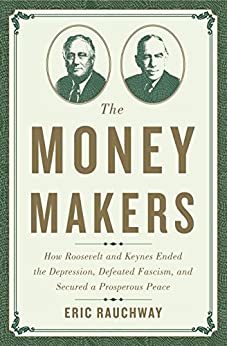
The Money Makers: How Roosevelt and Keynes Ended the Depression, Defeated Fascism, and Secured a Prosperous Peace, by Eric Rauchway
Call it selective memory: we tend to forget that the survival of our democratic system was by no means assured on March 4, 1933, when Franklin Delano Roosevelt was sworn in as president. With the country paralyzed by twenty-five percent unemployment, shuttered factories, insolvent banks, and rapidly falling prices for farm commodities and consumer goods alike, both Communism on the Left and fascism on the Right were rapidly gaining adherents. It was far from clear that a catastrophic clash of the extremes could be prevented.
Contemporary events in Europe suggested that even the best-educated and most sophisticated societies could all too easily turn dangerously radical: barely more than a month earlier, Hitler had been named Chancellor of Germany. In The Money Makers, historian Eric Rauchway reviews the economic policies that FDR deployed to rescue the nation from a similar fate, steering the country on a moderate course through the years of the Depression and the world war that followed.

Counterstrike: The Untold Story of America’s Secret Campaign Against Al Qaeda, by Eric Schmitt and Thom Shanker
One of democracy’s most remarkable characteristics is the sheer volume of closely guarded information that can be reported and published without resulting in jail time or torture for the authors. Counterstrike, a remarkable bit of longitudinal reporting by two veterans of the New York Times, brings to light a host of insights and behind-the-scene details about America’s decade-long campaign against Al Qaeda and its affiliates and imitators.
The principal theme of Counterstrike is how in the course of the past decade “the government’s force of professional counterterrorism analysts has grown from a group small enough to know each other’s phone numbers to a vast army linked by supercomputers processing thousands of bits of data in nanoseconds.” And, by no means incidentally, spending tens of billions of dollars in the process. However, the overarching theme of Counterstrike is the gradual maturation of American counterterrorist policy in the opening decade of the 21st Century, shifting gradually from one bent simply on using brute force to kill or capture terrorists to a much more sophisticated and broad-based policy of deterrence drawn from the playbook of the Cold War.
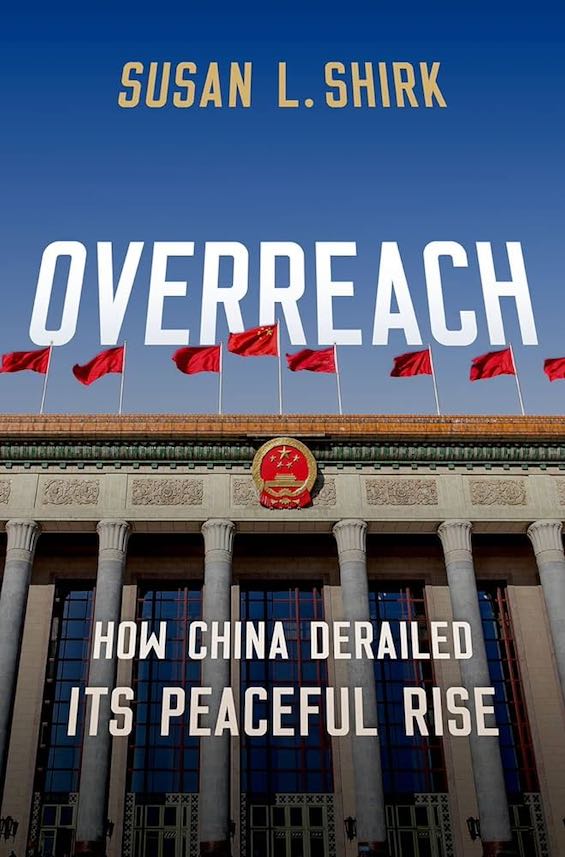
Overreach: How China Derailed its Peaceful Rise by Susan L. Shirk
Many Americans seem to assume that the current tension between the US and China arose only with the election of Donald Trump in 2016—or with the rise of Xi Jinping to the top of the Chinese Communist Party (CCP) four years earlier. But that’s far from the case. In Overreach: How China Derailed Its Peaceful Rise, veteran China analyst Susan Shirk reveals the fateful changes that played out in Beijing beginning a decade earlier. Bringing to bear a half century’s experience as a student of Chinese politics, Dr. Shirk digs deeply into the weeds of the country’s opaque political system to document the emergence of its aggressive new stance in the world—and the growing risk of war between the US and China.
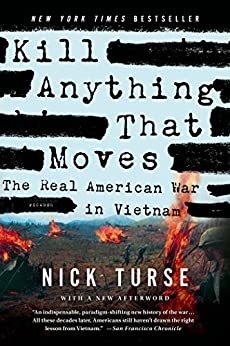
Kill Anything That Moves: The Real American War in Vietnam, by Nick Turse
The sheer scope of the Vietnam War was far greater than that of the U.S. military efforts in Iraq or Afghanistan. More than 10 times as many Americans died in Vietnam than in Iraq and Afghanistan combined. Even more significantly, some 3.8 million Vietnamese died in that conflict, according to the best available estimate, while Iraqi and Afghan casualties are measured in hundreds of thousands. In Kill Anything That Moves, Nick Turse exposes the grim reality of the U.S. role in that war: the infamous My Lai Massacre was merely one of thousands of incidents in which American troops indiscriminately killed Vietnamese civilians.

The United States of War: A Global History of America’s Endless Conflicts, from Columbus to the Islamic State by David Vine
Military leaders famously protest that they love peace, not war. But the evidence suggests otherwise, as David Vine’s explosive book, The United States of War, makes abundantly clear. His book updates and sets in historical context the case laid out nearly twenty years ago in Blowback by former Cold Warrior Chalmers Johnson. That earlier book, and two that followed, popularized the CIA term that highlights the unintended consequences of US military operations abroad. And those consequences have been abundant—not just since World War II, as Johnson argued so persuasively, but since the earliest days of the republic. America’s permanent war, Vine maintains, has profoundly distorted our national priorities and threatens our country’s prospects for the future.
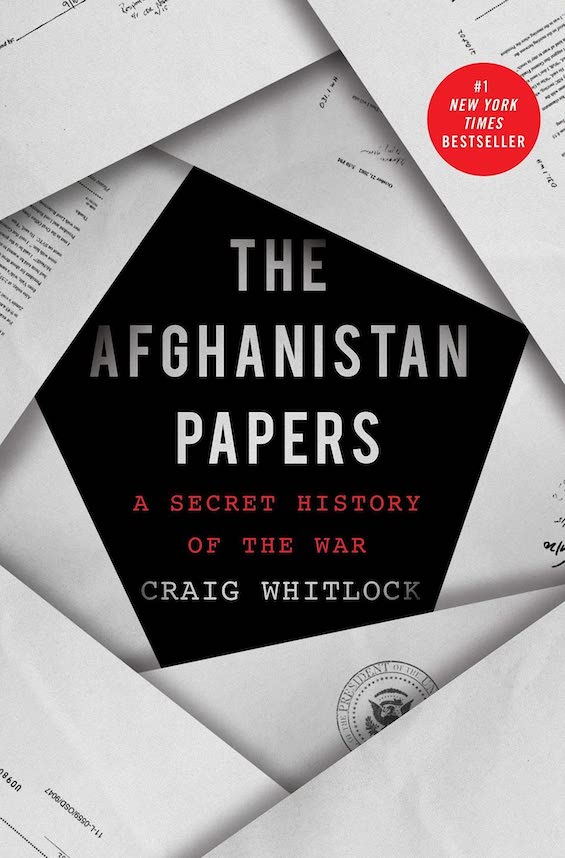
The Afghanistan Papers: A Secret History of the War by Craig Whitlock
There was “progress” at every turn, despite abundant evidence to the contrary. And that evidence was well known to the Pentagon and the White House. Every new strategy was a “game-changer” that “turned the corner” toward victory. Yet the facts showed the war growing steadily worse. During the 20 years when American troops were on the ground in Afghanistan, a period spanning four presidencies, our government fed us a steady diet of lies, half-truths, and distortions about the fighting on the other side of the world.
For anyone who witnessed General William Westmoreland lying through his teeth on television in a similar manner about the Vietnam War, none of that should have been a surprise. Yet we were all shocked by the Taliban’s overnight victory when President Biden finally pulled the plug on the country’s $1 trillion boondoggle that was the Afghanistan War. And now Washington Post investigative reporter Craig Whitlock comes to us with The Afghanistan Papers, the documentary evidence that explains exactly how and why that debacle came to be.
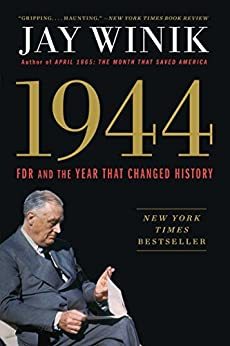
1944: FDR and the Year That Changed History, by Jay Winik
Hitler and the SS became truly frenzied about exterminating the Jews of Europe only in the final stages of the war, when it was obvious to anyone (except perhaps Hitler himself) that Nazi Germany had lost. In 1944, Jay Winik brings to light how the U.S. State Department, many of whose officials were overtly anti-Semitic, took deliberate steps to sabotage any action by FDR’s White House to save at least some of the Jews. Winik recounts this story in excruciating detail: “the State Department was now using the machinery of government to prevent, rather than facilitate, the rescue of the Jews,” he writes. “The fear seemed to be, not that the Jews would be marched to their deaths, but that they would be sent to the Allied nations.” The Department has the blood of more than a million people staining its already sad record of amorality.
Historical background
From the earliest days of the republic, the United States has been deeply engaged with other countries, despite George Washington’s famous admonition in his Farewell Address not to “entangle our peace and prosperity in the toils of European ambition.” (Contrary to accepted opinion, he didn’t use the term foreign entanglements.)
- France intervened in the American Revolution—in fact, our country might well not have gained its independence otherwise. During the presidencies of Washington and John Adams, New England merchantmen carried on a lively trade with China.
- When Jefferson was in office, he sent the U.S. Navy and a detachment of Marines to battle the Barbary Pirates. In 1812-14, during the administration of James Madison, the U.S. was at war with Great Britain—again.
- Later that decade, under the presidency of James Monroe, American troops under the command of General Andrew Jackson seized key settlements in Florida, forcing Spain to cede the territory to the U.S.
- Throughout the 19th Century, the U.S. Army and American settlers collaborated in a continuing campaign to annex the territory of more than 600 Indian nations.
- In mid-century, when James K. Polk lived in the White House, the U.S. grabbed more than 500,000 square miles of territory from Mexico.
Less well known but equally significant
- The trade in cotton with Great Britain made many Southerners rich and provided them with a “justification” to enslave African-Americans by the millions.
- During the latter half of the 19th Century, foreign investment in American railroads, the bonds of state governments, and manufacturing played a central role in financing the Industrial Revolution in the United States. The country was “the world’s largest recipient of foreign capital,” and thus the world’s greatest debtor nation.
- Then William McKinley and Theodore Roosevelt ushered in the age of American imperialism—and the country has never since stopped entangling itself in foreign affairs, despite recurring bouts of isolationism.
For related reading
You’ll gain more perspective on this theme from Presidents in Crisis: Tough Decisions inside the White House from Truman to Obamaby Michael K. Bohn (An eye-opening plunge into Presidential decision-making). And check out Top 10 nonfiction books about politics.
You may enjoy browsing through 20 top nonfiction books about history.
For more good books on the history of the US, see Top 20 popular books for understanding American history.
If you enjoy reading history in fictional form, check out 20 most enlightening historical novels.
And you can always find my most popular reviews, and the most recent ones, on the Home Page.

